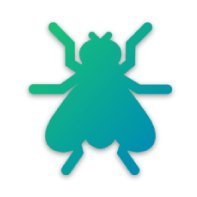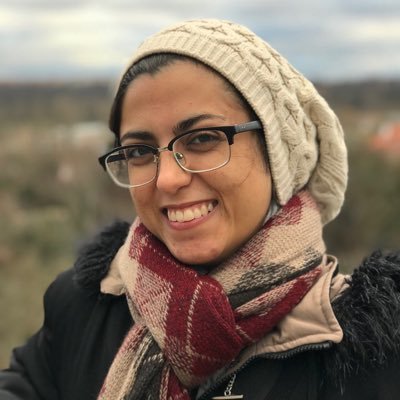
Janne Lappalainen
@lappalainenjk
Followers
323
Following
190
Media
0
Statuses
58
machine learning, connectomics, comp neuro
Tübingen, Deutschland
Joined January 2019
Biggest joy and honour leading this project at the intersection of visual neuroscience and ML to a successful finish! Paper:
nature.com
Nature - A study demonstrates how experimental measurements of only the connectivity of a biological neural network can be used to predict neural responses across the fly visual system at...
8
44
165
🚀 Applications are OPEN for the CAJAL NeuroAI course! Learn how AI & deep learning help us model brain activity & behavior. Work with experts, get hands-on training & join a global network! 📅 Apply by March 7 🔗 https://t.co/HSqhVDjdFI
#NeuroAI #DeepLearning #Neuroscience
0
16
50
Find me on bluesky now [at] https://t.co/XzYdStcy5c
0
0
1
Feel free to reach out if you are interested or encounter any issues, and raise issues directly at
github.com
A connectome-constrained deep mechanistic network (DMN) model of the fruit fly visual system in PyTorch. - TuragaLab/flyvis
1
0
1
Thanks to everyone who provided feedback and contributed. I diagnosed, revised, adapted, expanded, and documented our code for many hours (too many if you'd ask me 😅) to ensure things can be reproduced nicely within known variations.
1
0
1
Or install the package with `pip install flyvis` to develop custom models and go from here: https://t.co/OxljS3tE4r
1
0
1
Quickstart with running the demos in Google Collab (which are just two clicks away). They explain the main approach and results of our paper: https://t.co/ZEVcPQlLJ4
1
0
1
Ever wanted to do deep learning with a neural net that is one-to-one mapped to 65.05% of the fruit fly brain? :D I will quickly advertise our code release of `flyvis`. Docs: https://t.co/2GC7NxgH0J Repo: https://t.co/IVOGzyVZuo Work with @jakhmack @srinituraga and colleagues
github.com
A connectome-constrained deep mechanistic network (DMN) model of the fruit fly visual system in PyTorch. - TuragaLab/flyvis
1
1
4
Thanks for the support for this blog post @ml4science, @jakhmack.
0
0
0
Why study the fruit fly brain? Tech giants spend billions on gigantic neural networks, but there’s a fruit fly with only 130_000 neurons that can do so much more and runs on less power than a quartz watch. Check out my blogpost:
machinelearningforscience.de
Can we build neural networks whose structure and computational abilities match a real brain? We are not quite there yet, but our new paper shows a strategy for getting closer to this goal.
1
2
9
I personally like the seminars with others from the community. Excellent support for your doctorate! Application closes on Nov 15 this year.
Researching #AI #ComputerVision #MachineLearning #Robotics #HCI? Join our elite doctoral program - a partnership with MPI-IS, @uni_stuttgart & @uni_tue! Applications accepted until Nov 15, 2024 at https://t.co/veVpmjl215
0
0
1
Neither group exists in a vacuum. We’d really need the differentiable graph of social interaction between those nodes and backdrop to do credit assignment. Soft credit to neuroscientists is probably okay!
0
0
0
To put it simply, analog to AlexNet: Neuroscientists are layer 1 and see what the brain does. Engineers are layer 7 and output the algorithm. The middle remains a black box that probably includes cognitive scientists and has skip and recurrent connections.
@TonyZador @ylecun The problem with this kind of vagueness is that it basically allows neuroscientists to take soft credit for everything done using neural networks. One can, however, point to lots of "facts" discovered by engineers about what works and doesn't work.
1
0
1
Update: @jakhmack got the brains, the projects __and__ the desks! Join us in Tübingen.
0
0
1
Highly recommend joining! Tübingen is beautiful, and you’ll find strong support from PIs, Jakob’s group, and the whole community. We have lots of highly skilled people, and plenty exciting opportunities to contribute to science (though desk space might be limited).
A propos: Inspired to do a PhD or Postdoc in #ML4Science/#AI4Science? We have multiple openings to work ML and AI tools for scientific discovery, in neuroscience and beyond! Full details: https://t.co/oNwIeQ3g8v Students: Apply by Nov 15, directly to IMPRS-IS or @ELLISforEurope
1
0
6
Excited for my Dual Perspectives talk and panel with @RachelIreneWils and @dddavi about #connectomes on Tuesday afternoon at #SfN24 #connectomics
#sfn2024 Moderating a discussion between @srinituraga and @RachelIreneWils on “Connectomics: Opportunities and Limitations”. Two strong & distinct approaches for integrating wiring diagrams with other modalities to crack circuits. Tue Oct 8 1:30-3pm
0
5
29
Google maps for brain scientists. Stunning effort and results! Congrats to all 292 researchers at 100 institutions involved! That’s what we need to move things forward.
Big news! The fly connectome is featured on the cover of a special edition of Nature. This is all possible thanks to the collaboration of 292 members of The FlyWire Consortium! https://t.co/Mrz7Yrx1eU Check out the thread for an overview of the 9 #flywire papers published today
1
0
10
Headed to @BernsteinNeuro Conference this weekend and interested in how biological computation is performed across different scales from single neurons to populations and whole-brain and even astrocytes and the whole body, drop by our workshop co-organized w/ @neuroprinciples
1
13
70
Feels like yesterday that Richard (@_rdgao) joined and we became office mates. We watched each other do a lot of work since then. Check out his beautiful work on inferring spiking-neural network parameters using SBI!
My #AI4Neuro magnum opus: Discovery of spiking network model parameters constrained by neural recordings, using simulation-based inference & generative “AI”. (aka the answer to “how the f did you end up in Tübingen?”) Here's what we have in store: https://t.co/UpnjVaLp8G
1
0
5
Michael (@deismic_) led this project with clarity and determination. Proud to be part of the effort. Big respect and thanks to everyone for the welcoming teamwork!
How can we train biophysical neuron models on data or tasks? We built Jaxley, a differentiable, GPU-based biophysics simulator, which makes this possible even when models have thousands of parameters! Led by @deismic_, collab with @CellTypist @ppjgoncalves
1
0
4












